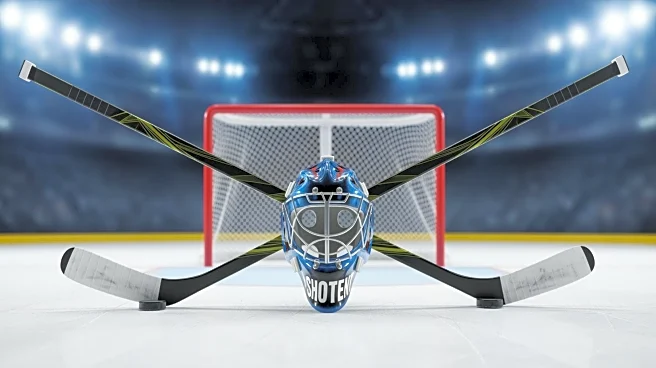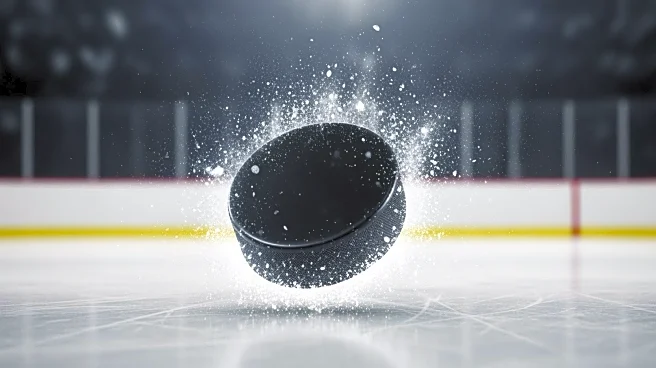What's Happening?
The National Hockey League (NHL) is currently evaluating the quality of ice that will be used during the upcoming Winter Olympics. This scrutiny comes amid concerns raised by players and teams regarding
the safety and performance conditions of the ice surfaces. Recent injuries to key players, such as Ottawa Senators defenseman Thomas Chabot and Carolina Hurricanes defenseman Charles Alexis Legault, have heightened these concerns. Chabot exited a game early due to injury, while Legault is expected to miss up to three months following hand surgery. Additionally, the Colorado Avalanche has secured forward Gavin Brindley with a two-year contract extension, and the Minnesota Wild celebrated Marcus Johansson's 1,000th NHL game. These developments are part of a broader context where player safety and performance conditions are under the spotlight, especially as the league prepares for international competition.
Why It's Important?
The quality of ice surfaces is crucial for player safety and performance in hockey. Poor ice conditions can lead to increased risk of injuries, affecting team rosters and player careers. As the NHL prepares for the Winter Olympics, ensuring optimal ice quality is essential to maintain the integrity of the games and protect athletes. The scrutiny over ice conditions reflects broader concerns within the league about player welfare and competitive fairness. Teams and players stand to gain from improved conditions, which can enhance gameplay and reduce injury risks. Conversely, inadequate ice quality could lead to more injuries, impacting team performance and player availability, which could have significant implications for the league's reputation and the success of the Winter Olympics.
What's Next?
The NHL is likely to continue its assessment of ice quality, potentially implementing measures to improve conditions ahead of the Winter Olympics. This may involve collaboration with international sports bodies and ice maintenance experts to ensure standards are met. Teams and players may also advocate for better conditions, influencing league policies and practices. The outcome of these evaluations could lead to changes in how ice surfaces are prepared and maintained, setting new standards for future competitions. Stakeholders, including team management and player associations, will be closely monitoring developments to ensure player safety and competitive integrity are prioritized.
Beyond the Headlines
The focus on ice quality highlights the ongoing challenges in balancing player safety with competitive demands in professional sports. It underscores the importance of infrastructure and environmental conditions in sports performance, which can have long-term implications for athlete health and career longevity. This situation may prompt broader discussions about investment in sports facilities and the role of technology in enhancing playing conditions. Additionally, it could lead to increased scrutiny of other environmental factors affecting sports, such as climate change and its impact on outdoor events.












